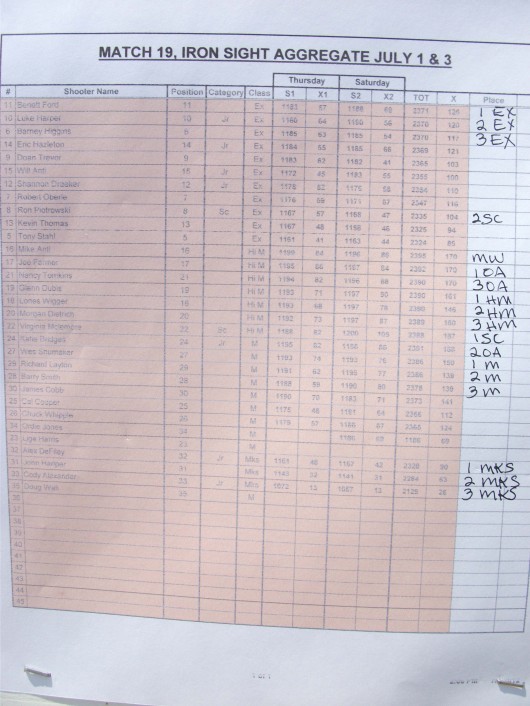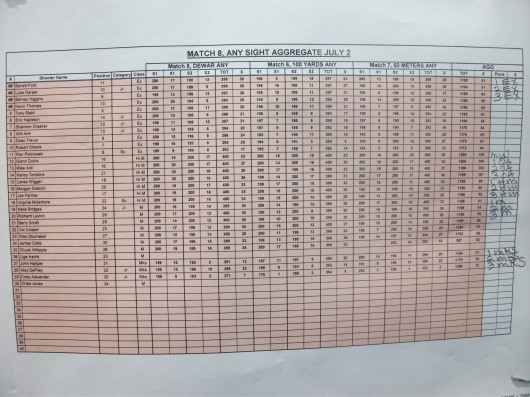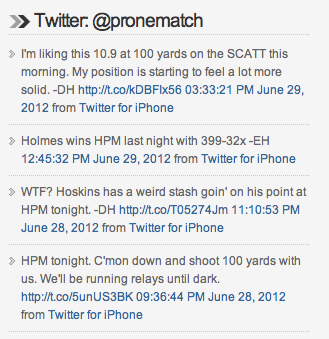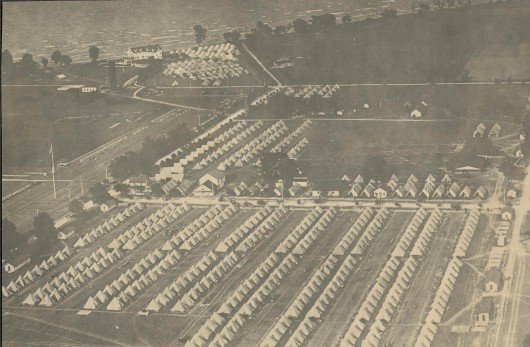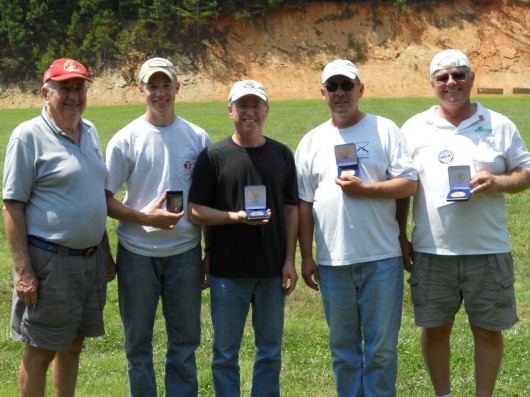by Hap Rocketto
It is interesting to note that 34 general and flag officers account for 28 Rifle, eight Pistol, and three International Distinguished Badges. But only one officer who has worn stars earned the Badge after World War II, Commandant of the Marine Corps General David M. Shoup pinned on the Distinguished Pistol Shot Badge as a colonel in 1946.
It now seems that what was once a boost to an officer’s career, a prestigious appointment to a service or branch shooting team, the Infantry, Cavalry, Artillery, Engineers, or Air Service, at Camp Perry before the Second World War has now become a pothole on the road to the highest ranks.
There is no rank on the range and found this to be true when I was updating the Civilian Marksmanship Program’s Distinguished data base. Service shooters from the lowest enlisted rank to the highest field grade commissioned officer all have earned the Badge, many going on to great fame.
Second lieutenant John J. Pershing went Distinguished in 1891 and rose to be the second highest ranking officer in US military history as General of the Armies-only George Washington has a higher precedence number. Lyman Lemnitzer was Distinguished as a “shavetail” and ended his career as Chairman of the Joint Chiefs of Staff. Marine Second Lieutenant Thomas Holcomb became Commandant and the first Marine to don four stars. Second Lieutenant Oscar Westover was a major general when he headed the Army Air Corps.
First Lieutenant Hugh Casey became Douglas MacArthur’s chief engineer in the Pacific, retiring as a major general. Former First Lieutenant Joseph Mauborgne became a major general as Army Chief of Signals. Holger Toftoy earned his Distinguished Pistol Badge as a young lieutenant and retired as a major general, largely responsible for the early success of the Army’s missile program.
Perhaps the two greatest ascending shooting stars were Sergeant Courtney Hicks Hodges and Staff Sergeant Chester E. McCarty. Hodges wore four stars when he retired and McCarty, who earned his Badge in the Army, had had three on his epaulets when his career ended as an Air Force Officer.
Deep within my chest beats the heart of an enlisted man and I take pride in the many thousands of fellow private soldiers and non commissioned soldires who are Distinguished. They rank from private to sergeant major but I truly treasure the grades held by the men who earned the Badge in the eras of the .45-70, Krag, and ’03. Those were the days when the cavalry rode, fed, and curried horses. Aeroplanes were covered with doped canvas and had open cockpits and wooden propellers. There was no mechanization; the infantry walked. They held specific positions to the branch. The Cavalry had Trumpeters, Musicians, Saddlers, Farriers, and Blacksmiths. Other branches had Artificers, Cooks, Chief Engineers, Quartermaster, Commissary and Ordnance Sergeants and even a General Service Messenger.
Most of the early Distinguished shooters were privates, private first class-the so called “high private’-corporal, and sergeants. There were a smattering of Staff, Technical, and First Sergeants with an occasional Master Sergeant and Sergeant Major. But, it was mostly the lowest grades, not unusual at a time in an army so small it might take two or three enlistments to earn a set of stripes, who did the shooting.
For them it was more than just pride in the most basic of military skills. It was financial. When money was available from a tight fisted Congress qualifying as Sharpshooter or Expert meant three or five dollars more a month. It was big money in the years when a private earned 21 dollars a month. The pay allowed the genteelly destitute soldier an extra bag of Bull Durham and rolling papers, a few extra nickel beers, or a handful of ten cent tickets for a turn with a favorite “Taxi” dancer at the local dance hall.
The many men and women, commissioned and non-commissioned, who can truly be called Distinguished when referring to both their skill with the service arm and military career are, by and large enlisted, reminding me of an incident I observed as a young sergeant. We were shooting the All Army Championship in the mid 1970s. It was hot and humid as only Fort Benning can be in the early summer. A group of retirees and their wives were observing the matches at Easley Range, named in honor of Distinguished Marksman Brigadier General Claudius, “Spec” Miller Easley, killed directing fire on Okinawa on June 19, 1945.
We had just finished the 600 yard line and were stripping off our heavy leather shooting coats and sodden sweatshirts, wiping our brows, and downing huge draughts of cool water when a retirees’ wife asked the shooter next to me, a soldier of many years, stripes, and experience, the likes of a Jack Hider, Arpad Tamas, or maybe Earl Waterman, a question.
“Sergeant,” she said. “It is frightfully hot and humid today and you look about done in. Is this really fun?”
The old soldier, his short dark hair ironed flat by sweat and his hat, looked at her, capped his canteen, wiped a few errant drops of water from his chin with the back of his hand, smiled, and replied, “It must be fun Ma’am. They let the officers do it.”

